Related Research Articles
Simeon Nelson is an Australian sculptor and transdisciplinary artist.

Guy Martin à Beckett Boyd was an Australian potter and figurative sculptor noted for his ability to represent sensuality in the female nude with fluid forms. He was also active in environmental and other causes, including protesting against the damming of the Franklin River and advocating the innocence of Lindy Chamberlain.
John Davis was an Australian sculptor and pioneer of environmental art.
Mike Parr is an Australian performance artist and printmaker and Painter. Parr's works have been exhibited in Australia and internationally, including in Brazil, Cuba, France, Germany, Hungary, Japan, Korea, Taiwan, and the United States.

Zoja Trofimiuk is an Australian sculptor and printmaker, born in Prague, Czechoslovakia. She specializes in cast glass; her studio is in Melbourne.
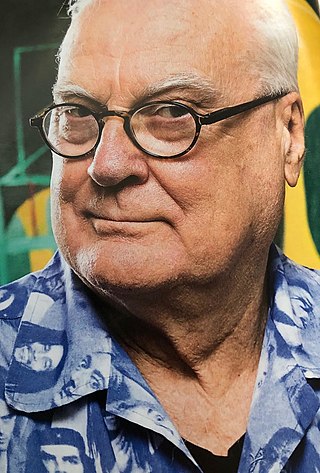
Gareth Sansom is an Australian artist, painter, printmaker and collagist and winner of the 2008 John McCaughey Memorial Prize of $100,000.

Thomas Lenton Parr AM was an Australian sculptor and teacher.
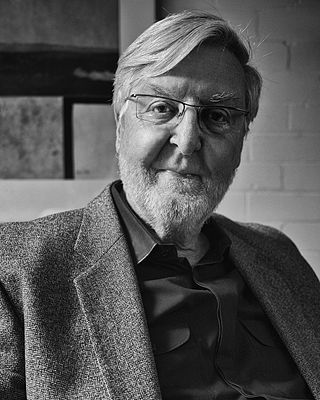
Kenneth William Scarlett OAM is an Australian writer specialising in Australian sculpture. His 1980 publication Australian Sculptors (1980) was the first to present a complete survey of sculpture in Australia. Subsequent publications include Sculpture in Public Gardens (1983), Limited Recall: A Fictional Autobiography (2005), Elgee Park: Sculpture in the Landscape (2010) and monographs on the sculptors John Davis (1989) and Andrew Rogers (2010). He was a contributing editor to Sculpture (magazine) USA for many years and his articles appear regularly in art journals in Australia and overseas.

Theodora Esther Cowan (Theo) (1868–1949) was an Australian artist, regarded as the first Australian-born woman sculptor. She was one of a number of women sculptors who were working at the end of the 19th century. Apart from being the first to be born in Australia, Cowan (along with Margaret Baskerville) was among the first to achieve success, especially for her portrait work.
Jacqueline Fraser is a New Zealand artist of Ngāi Tahu descent.
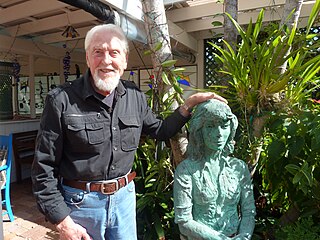
Marc Clark was a British-born Australian academic, sculptor and printmaker.

Alan Constable is an Australian artist well known for his ceramic sculptural depictions of photographic cameras. Constable has worked principally from his Northcote-based studio at Arts Project Australia since 1991, gaining critical success as a multi-disciplinary artist proficient in a wide diversity of media including pastel, gouache, paint and ceramics. He has been working on his series of ceramic cameras since 2007 and works from this series were represented at the 2009 Australian Ceramic Triennale in Sydney and featured in a solo exhibition of his work, Clay Cameras, at the Centre for Contemporary Photography in Melbourne. Thirteen works from this series were acquired for the collection of the National Gallery of Victoria in 2014, and appeared in their blockbuster exhibition of contemporary art, Melbourne Now, in the same year.
Maree Clarke is an Australian multidisciplinary artist and curator from Victoria, renowned for her work in reviving south-eastern Aboriginal Australian art practices.

Ewa Pachucka was a Polish-Australian sculptor.
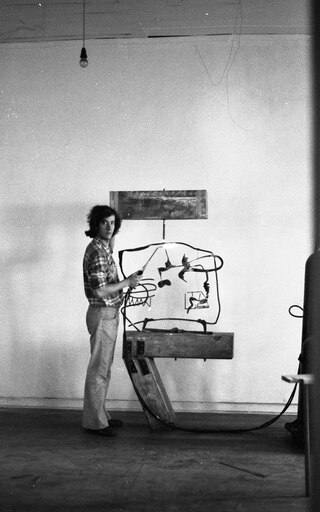
Geoffrey Bartlett is an Australian sculptor working in Melbourne. Bartlett's career in sculpture has spanned over almost 50 years since 1973. He is known for both his studio-based works and major public commissions in sculpture. Bartlett's work has been noted for its contribution to modern Australia sculpture. In 2007, the National Gallery of Victoria held a major retrospective on Bartlett's work since 1987.
Trefor Prest is a Welsh-born Australian sculptor living in Victoria since 1961. He produces highly-finished intricate and puzzling, often humorous, quasi-mechanical or machine-age constructions that are the subject of solo shows in major public and commercial galleries and feature in national and international group exhibitions, including the Mildura Sculpture Triennials.
The Mildura Sculpture Triennials took place between 1961 and 1988. Inaugurated in 1961 as the Mildara Prize for Sculpture sponsored by the Mildara Winery, the next event was renamed the Mildura Sculpture Triennial. It was the first event in Australia that promoted large scale contemporary sculpture and incorporated site-specific installations and performance art in an innovative and often challenging program.
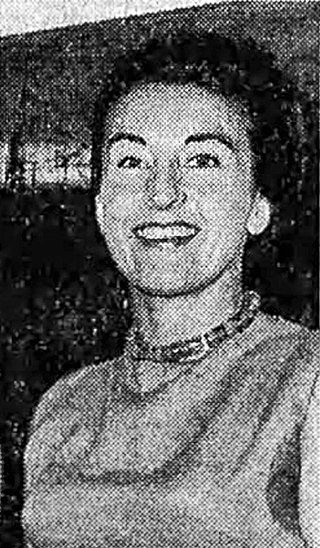
Margaret Anne Dredge was an Australian painter and printmaker, active from the mid-1950s until 1997, and teacher of art.

Raymond Eric (Ray) Woolard (1951–2023) was an Australian artist from Ballarat, well known and much celebrated in the 1970s and 80s for his sculpture in steel, multi media and found objects, installations and paintings.
References
- Belgiorno-Nettis, Franco. '1973 Founding Governor's Report.' Biennale of Sydney, retrieved 15 August 2007, http://www.biennaleofsydney.com.au/history/1973
- Colville Street Gallery. 'Bob Jenyns.' Colville Street Gallery, Hobart, https://web.archive.org/web/20081120003104/http://www.colvillestreetartgallery.com.au/gallery/bobjenyns.php
- Drury, Nevill. (ed) New Art Two: New Directions in Contemporary Australian Art, Sydney: Craftsman House, 1988.
- Germaine, Max. Artists and Galleries of Australia and New Zealand, Sydney: Lansdowne, 1979.
- Hutchinson, Noel. 'Sculpturscape '73.' Art and Australia, vol. 11, no. 1, 1973, pp. 76–86
- Lindsay, Robert. Field to Figuration: Australian Art 1960-1986, Melbourne: National Gallery of Victoria, 1986.
- McCulloch, Alan. Encyclopaedia of Australian Art, Melbourne: Hutchinson, 1984.
- McCulloch, Sandra. Encyclopaedia of Australian Art, 2nd ed. Sydney: Allen and Unwin, 1994.
- Murphy, Bernice. Australian Perspecta 1981, [catalogue] Sydney: Art Gallery of New South Wales, 1981.
- National Gallery of Australia. 'Prints and Printmaking.' National Gallery of Australia (Australian Prints), Canberra, https://web.archive.org/web/20081228032021/http://www.printsandprintmaking.gov.au/Default.aspx?
- Scarlett, Ken. Australian Sculptors, Melbourne: Nelson, 1980.
- Scarlett, Ken. 'Australian Humour – Australian Sculpture.' Artlink, vol. 13, no. 2, 1993, pp. 29–31
- Sculpturscape '73. Sculpturscape '73: An Exhibition in Mildura Australia, Mildura: Mildura Arts Centre, 1973.
- Sturgeon, Graeme. Australian Sculpture Now: Second Australian Sculpture Triennial, [catalogue essay] Melbourne: National Gallery of Victoria, 1984.
- Sturgeon, Graeme. Sculpture at Mildura: The Story of the Mildura Sculpture Triennial, 1961–1982, Mildura: Mildura City Council, 1985.
- Tasmanian Museum and Art Gallery. 'Sea: Maritime Treasures from the Tasmanian Museum and Art Gallery.' Tasmanian Museum and Art Gallery, https://web.archive.org/web/20081123031442/http://www.tmag.tas.gov.au/sea/seacat04.htm